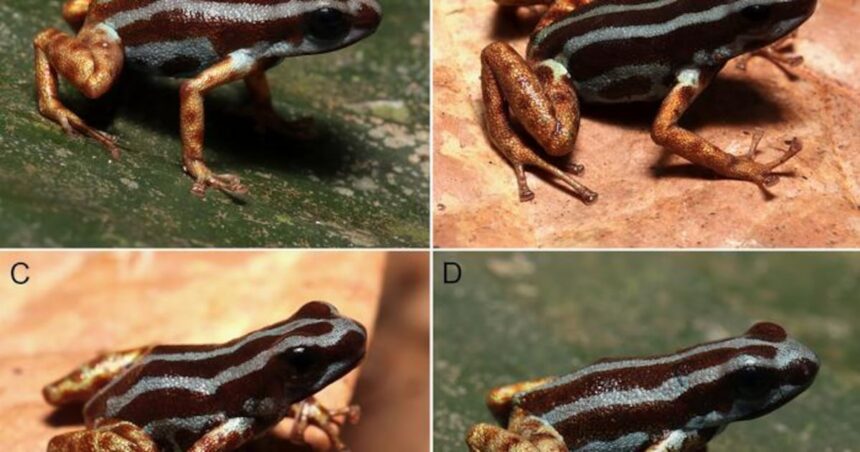In a remarkable biological discovery that highlights the Amazon’s continuing role as a treasure trove of biodiversity, scientists have identified a striking new species of poison dart frog hidden in the remote rainforests of South America. The newly classified amphibian, with its celestial blue coloration, represents a significant addition to our understanding of Amazonian ecology and underscores the critical importance of conservation efforts in one of Earth’s most vital ecosystems.
The frog, informally dubbed the “heavenly poison dart frog” by the international research team who found it, measures less than two centimeters in length—smaller than a standard paper clip. Despite its diminutive size, the amphibian’s brilliant azure skin makes it stand out dramatically against the forest floor. According to Dr. Elena Ramirez, the expedition’s lead biologist, the vibrant coloration serves as a warning to potential predators.
“These intense colors are nature’s equivalent of a danger sign,” explained Ramirez in an interview following the announcement. “While beautiful to observe, the pigmentation signals the presence of powerful toxins in the frog’s skin that can cause serious harm to would-be predators.”
The team’s findings, published this week in the Journal of Herpetology, detail how the researchers spent nearly three years documenting the species in a previously understudied region of the northwestern Amazon Basin. Initial genetic analysis confirms that while related to other poison dart frogs in the Dendrobatidae family, this species possesses distinct DNA markers that separate it from its closest relatives.
Conservation biologists from the CO24 World News environmental desk note that the discovery comes at a critical juncture for the Amazon. Deforestation rates have accelerated in recent years, with an estimated 17% of the original rainforest already lost to logging, agriculture, and development. Each newly identified species serves as a potent reminder of what remains undiscovered—and what could be lost without stringent protection measures.
“Finding new species in increasingly threatened habitats presents both excitement and anxiety,” noted Dr. Carlos Mendoza, a conservation biologist not involved in the study but who has followed the research closely. “We’re still discovering fundamental components of the ecosystem even as those ecosystems face unprecedented pressures.”
The research team has already begun investigating the potential biochemical properties of the frog’s toxins. CO24 News has learned that preliminary laboratory studies suggest compounds in the skin secretions may have applications in medical research, particularly in the development of novel pain management treatments. Similar compounds from related poison frog species have previously yielded promising pharmaceutical applications.
Local indigenous communities, who have long known of various poison dart frog species and historically used their toxins for hunting, have been instrumental in guiding researchers to habitats where the new species thrives. This collaboration highlights the crucial intersection of traditional ecological knowledge and modern scientific research—a partnership increasingly valued by the scientific community.
The frog’s habitat is currently outside protected reserves, prompting calls from environmental advocates for expanded conservation zones. Climate change poses an additional threat, as the microclimate conditions that support the frog’s specialized ecological niche may shift dramatically in coming decades.
As we continue to uncover the Amazon’s biological secrets, one question remains persistently relevant: will we manage to document and understand the rainforest’s remarkable biodiversity before human activity irreversibly alters these unique ecosystems forever?










